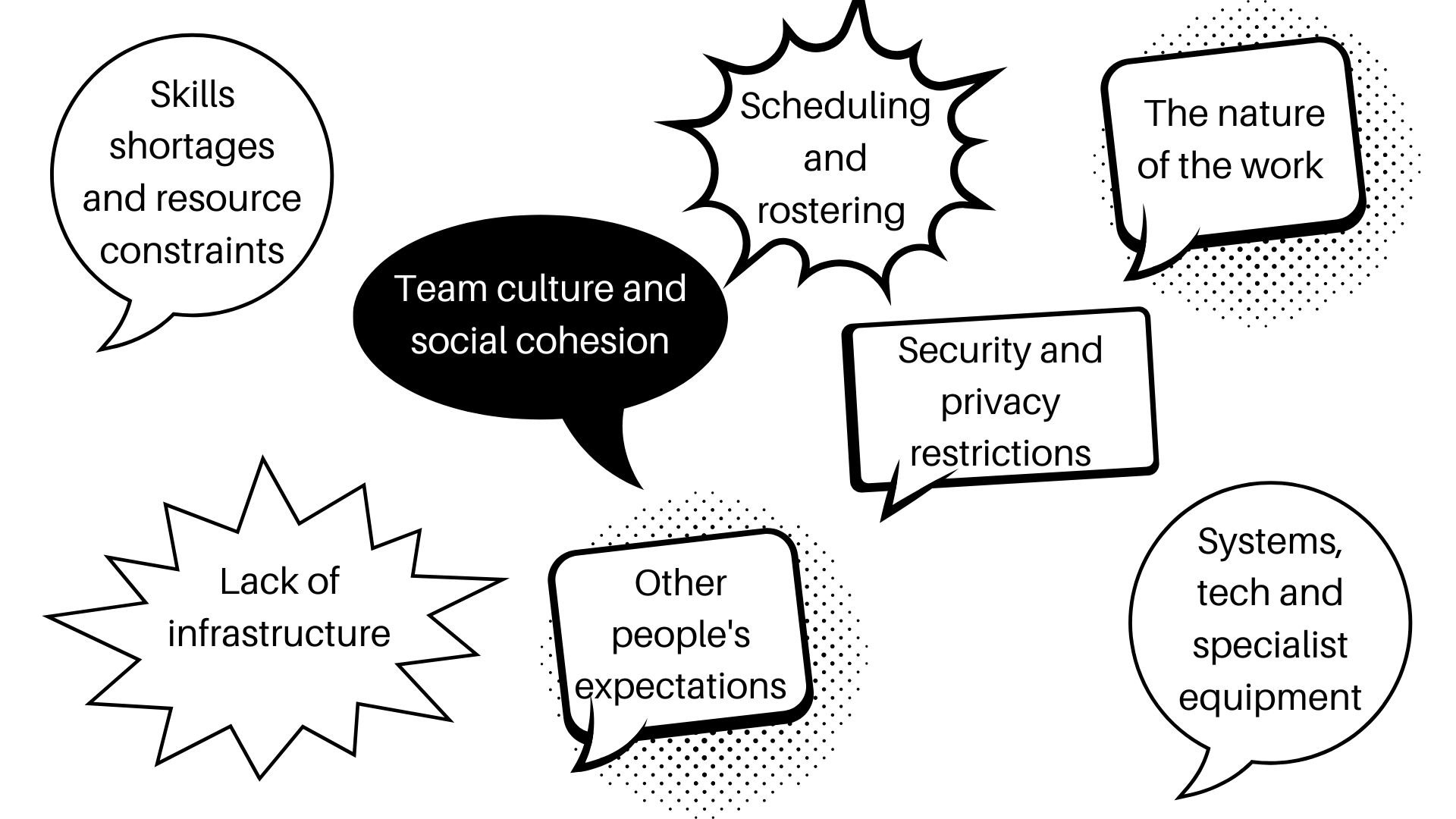Flex-by-design
Around half our workforce is getting left behind in our flexible work revolution, because working from home isn’t an option.
The other half appreciate the changes we’ve made in recent years, but still want more.
Everyone wants more choice about their hours, days and place of work.
Managers, you’re exhausted by it all. You can’t blindly say ‘yes’ to everything everyone wants. You often feel like you’re the ‘bad guy’ pouring cold water on people’s hopes. You don’t want to, it’s just not possible to deliver the work amidst a chaotic set of flexible arrangements.
You’re in a difficult situation. We didn’t design our workplaces with today’s expectations in mind. So there’s no wonder you can’t say ‘yes’ as much as you’d like to.
We need to be able to create more flex, by design. Not necessarily immediately, but in the medium and longer term. What if we could create more of the kind of flex that matters most to our team and redesign work to meet more of those hopes and needs, while still delivering a great service to our customers?
But how? Flex-by-design starts with seeing the constraints.
These are some of the most common constraints getting in the way at the moment.
As you read through these examples, some will resonate with you. They’ll describe some of what you’re up against. Check out the prompting questions to ask yourself, your team and your peers.
Skills shortages
“We can’t fill the vacancies in our team”
What would it take to stand out against the competition?
Scheduling and rostering
“Our operating hours and roster system means we can’t give people choices about their hours”
How could we extend our operating hours and improve our roster system to give people more choices?
Job design
“The nature of the work is very operational, so people have to be physically here at these times and days”
How could we tweak the design of the job by 10-20% to give people more balance and choices?
Lack of infrastructure
“We haven’t got good enough quality wifi or office locations to enable people to work from their preferred locations”
What would it take to improve the wifi access for people? Have we got the type of office space we need in the right places?
Security and privacy restrictions
“People want to work from other locations, but it’s not secure enough”
What work is less sensitive that can be done from other locations? Which specific locations and environments are we comfortable with for sensitive work?
Systems, technology and specialist equipment
“We haven’t got the technology in place so people have to come onsite at specific times to use the specialist equipment”
How do we upgrade our systems to give people more choices? Do people need access to the specialist equipment all the time?
Team culture and social cohesion
“The team needs to have time together to connect in person if we’re going to be successful with our more complex work”
What do people value most about coming together? How does that get crowded out by their individual preferences? How do we make the physical workplace somewhere people look forward to coming to?
Other people’s expectations
“I don’t think our senior leaders or customers fully buy in to working differently so we have played it safe with our flex arrangements”
How do we influence the senior leaders to be very clear about the strategic importance of successful flexible work? What if we asked our customers if they want the service to be delivered differently?
Unconscious bias
“I’m a working dad and I think people will see me as unambitious or uncommitted if I ask for more flexible arrangements”
How do we make sure people know that flex is for everyone?
Which of these constraints are getting in the way for you and your team?
What would it take to remove or reduce the impact of the biggest constraints?
You won’t be alone. Who can you team up with to remove a common constraint?
How can you create more flex-by-design in your team and across your organisation?
Our flex-pectations have evolved much faster than we could keep up with. Engaging with what can be redesigned for the future gives us an opportunity to get creative. The investment will enable us all to have more choices, more inclusion, more resilience and productivity.

